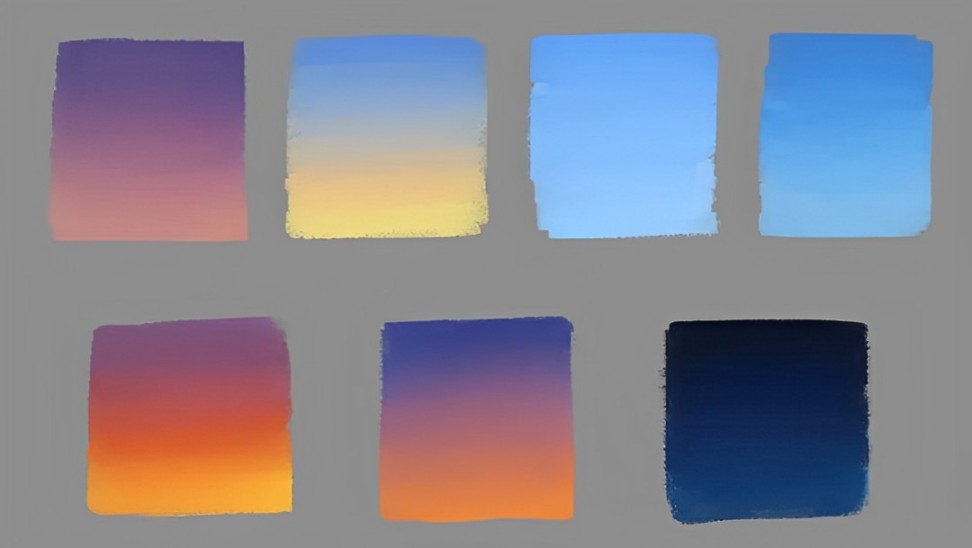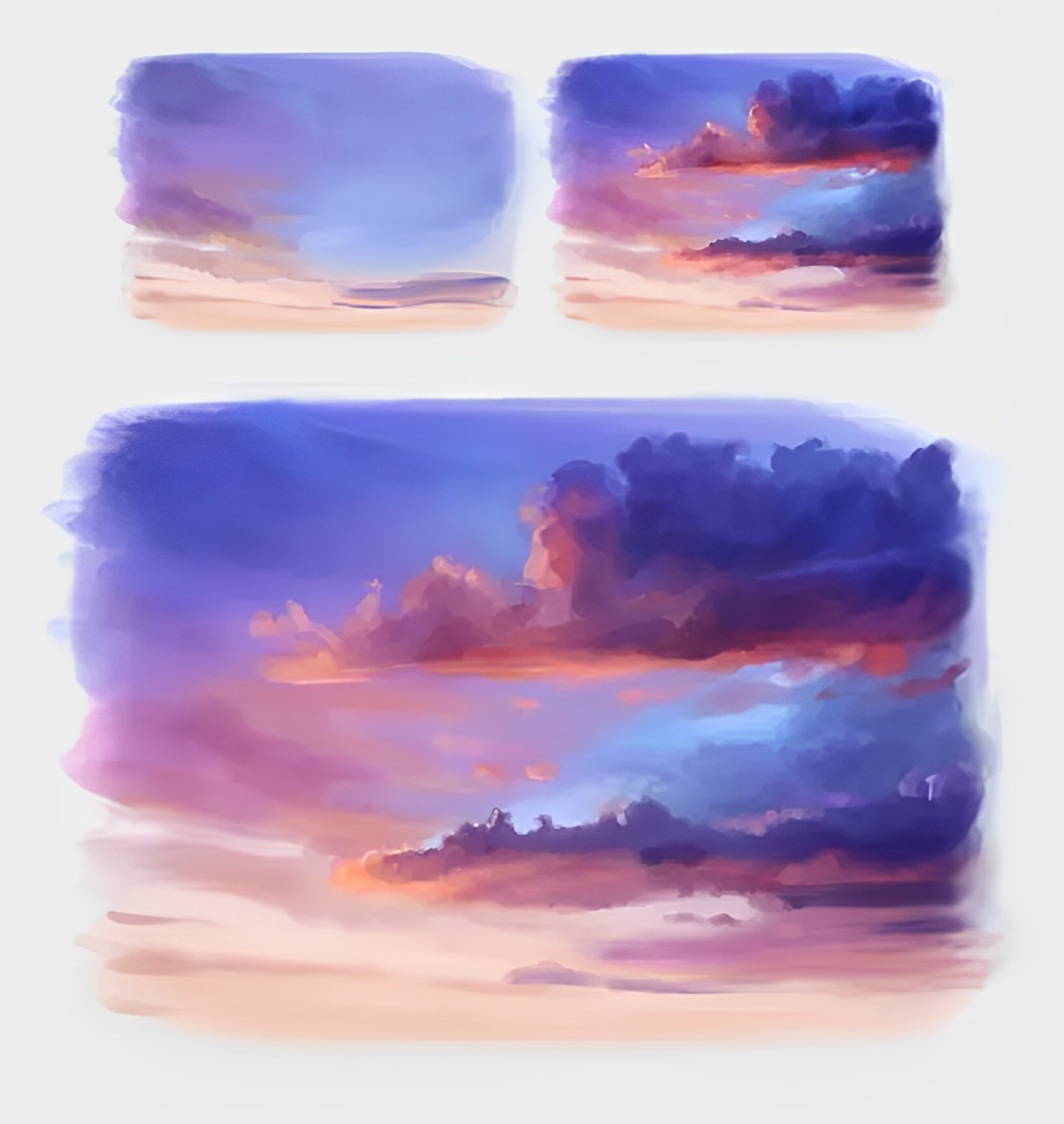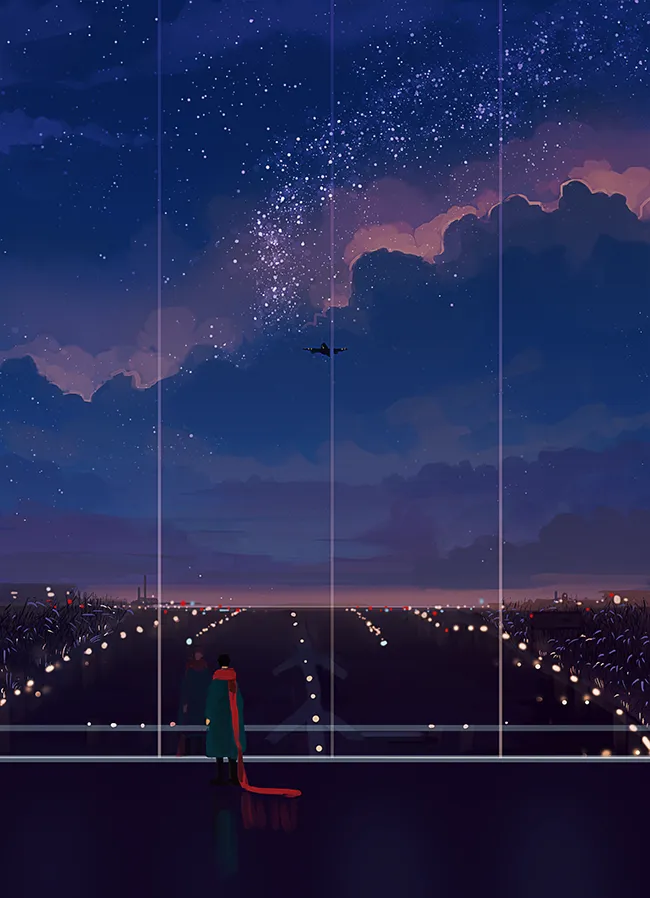How to Draw Clouds in Digital Art: Tips and Techniques
Did you ever, as a child, dream of the endless expanse of the sky and long to capture its beauty?
In digital art, the sky is undeniably one of the most striking and expressive elements. Whether it's the soft glow of dawn, a fiery sunset, or a starlit night, the sky can infuse your artwork with emotion and atmosphere.
One of the trickiest parts of painting a sky has to be capturing the essence of clouds. In this tutorial, we will start by exploring how to paint the colors of the sky and then provide you with some practical tips and inspiration on painting clouds.
These insights will assist you in vividly depicting beautiful clouds in the sky within your digital creations.


In this article, you will learn:
- How to Draw the Colors of the Sky?
- How to Draw the Shapes of Clouds?
- How to Draw the Colors of Clouds?
- Final Tips for Painting Stunning Clouds in Digital Art
How to Draw the Colors of the Sky?
The sky's colors are constantly shifting, from the soft pinks of dawn to the vibrant blues and fiery reds of sunset. These dynamic transitions are key to bringing a sense of life and atmosphere to your artwork.
Take a look at the image below, which illustrates the progression of sky colors from sunrise to nightfall.

When painting the base colors of the sky, gradients are often used to mimic the natural shifts in light. This technique creates a realistic effect, with the sky near the horizon appearing lighter and cooler in tone.
For a clear sky, a gradient blending of three shades of blue is commonly used to suggest depth and distance.
The upper sky typically features warm, rich blues, while near the horizon, cooler, brighter tones dominate. A transitional blue in between helps to seamlessly blend the two, enhancing the overall perspective.

You can easily control the colors of the sky by utilizing layer blending effects and making subtle adjustments to the opacity of layers.
Experimenting with these techniques may lead to unexpected and unique color effects. Give it a try and see what creative outcomes you can achieve!

Do you find it cumbersome to constantly adjust brush sizes and settings, create layers, and apply filters while working on digital art, greatly impacting your productivity?
In such situations, why not give TourBox a try? This creative controller is beloved by many digital artists. Just like using a game controller for gaming, you'll soon find yourself putting your keyboard aside.

TourBox brings a fantastic new creative experience to the table. You'll fall in love with the feeling it gives you. Check out our digital painting page to see how TourBox works its magic.
How to Draw the Shapes of Clouds?
Clouds in the sky have no fixed shapes—they come in endless forms and sizes. From fluffy cumulus clouds to small, puffy ones or even flat, stretched-out shapes, each type adds its charm to the sky.

Let's take drawing fluffy, soft clouds as an example:
- Adjust the digital pen to have a lighter pressure sensitivity for that soft, fluffy, and light feel.
- Use the Eraser tool to carve out irregular, natural cloud shapes, giving them a more organic appearance.
- Apply the Blur or Smudge tools to soften the edges, making the clouds look fluffy and seamless.

You can also experiment with Photoshop's Lens Flare filter. Simply go to Filter → Render → Lens Flare.

This filter is great for adding extra details and enhancing the colors in your artwork. It's especially effective for bringing life to scene illustrations and dramatic compositions.

How to Draw the Colors of Clouds?
The colors of clouds change dramatically throughout the day, shifting with the angle and intensity of sunlight. When painting cloud layers, it's important to consider the direction of the light and how it interacts with the clouds.

Avoid using pure white for clouds or black for their shadows. Instead, remember that clouds often reflect the colors of their surroundings, such as soft blues or greens from the sky or the earth below.

As the sun lowers in the sky, its rays illuminate the clouds from the side, casting a warm glow.
To add depth, use cool tones for the shaded areas and warm hues for the lit sides. The contrast between these tones enhances the clouds' sense of transparency and dimension.

During sunset, the sky takes on gentle pink and purple tones, while sunlight filters through the base of the clouds, creating a warm orange glow.
The shadows, meanwhile, carry subtle purples—formed by a blend of the deep blue of the clouds and the red hues of reflected sunlight.

At night, the sky transitions from shades of purple to deep blue, while the clouds take on a rich, deep blue color.
The illustration below, created by the artist 9Jedit, showcases how clouds are colored in a nighttime starry sky.

The colors of the clouds also shift depending on the environment.
For instance, the sky over the ocean is dominated by cooler blue tones. In contrast, when a fire blazes against the night sky, warm colors like orange can cast their glow, transforming the sky's hues.
The following illustration is also from the talented artist 9Jedit.

Final Tips for Painting Stunning Clouds in Digital Art
Clouds may look simple, but capturing their beauty and realism takes practice and attention to detail. To wrap up this tutorial, here are some key techniques to help your cloud paintings stand out.
1. Play with Color Blocks
Start with bold, loose strokes to block in the general shapes and tones of the clouds. This approach keeps your workflow efficient and helps you focus on the overall composition before diving into details.
2. Observe the Scene's Atmosphere
Clouds don't exist in isolation—they're shaped by the surrounding environment. Pay close attention to the air, light, and color temperature of your scene.
Are the clouds part of a warm sunset, a crisp blue sky, or a dramatic storm? Let the atmosphere guide your choices.
3. Use Cool Tones for Shadows
Avoid using plain grays or blacks for shadows, as they can make clouds look flat. Instead, mix in cooler tones like soft blues or purples. These subtle hues add depth and make the shadows feel more natural and dynamic.
4. Highlight the Edges
The edges of clouds often catch the most light. Add soft highlights along the edges using a bright, warm color to mimic the glow of sunlight. These accents bring dimension and life to your clouds.
5. Balance Warm and Cool Tones
Clouds become more visually interesting when you incorporate a mix of warm and cool colors. For example, use warm tones on the sunlit areas and cooler tones in the shadows. This contrast creates richness and makes the clouds pop.
6. Emphasize the Fluffy Texture
Clouds are known for their soft, airy appearance. Use Photoshop Blur or Smudge tools to soften the edges and give the clouds a realistic, fluffy look. Be careful not to overdo it—keep some sharpness in key areas to maintain structure.
By practicing these techniques, you will be able to create clouds that are not just realistic but also full of character and emotion. Whether your artwork calls for serene, dreamy skies or dramatic stormy clouds, these tips will help you bring your vision to life.
If you're interested in how TourBox can greatly enhance your efficiency in digital art creation, consider giving the latest TourBox Elite Plus series a try.
Previous TourBox models couldn't be used with iPads, which was inconvenient for artists and digital enthusiasts accustomed to drawing on iPads.

However, TourBox Elite Plus breaks all platform limitations, allowing you to enhance your digital art creation experience whether you're using iPadOS, Mac, or Windows.
Now it’s your turn—grab your stylus, TourBox, and start painting the skies of your imagination!